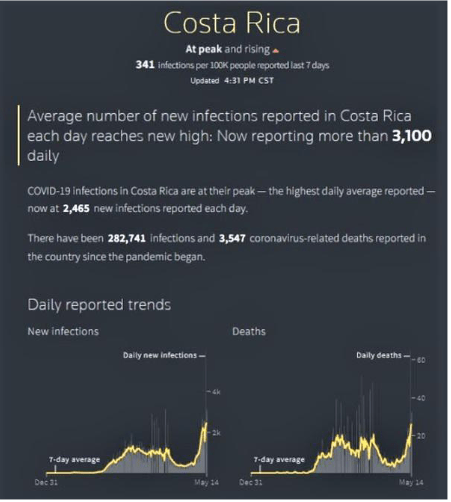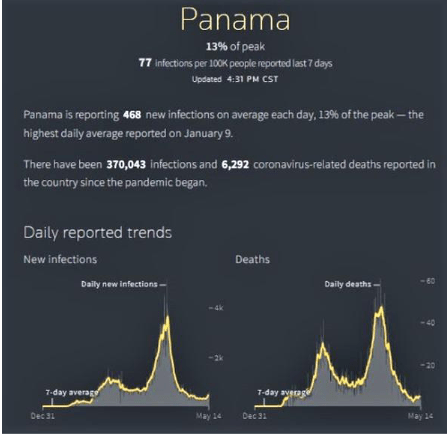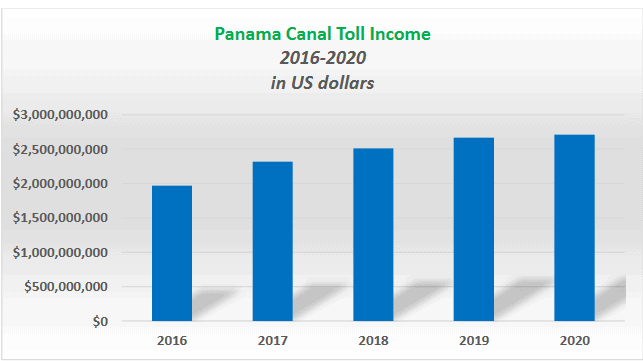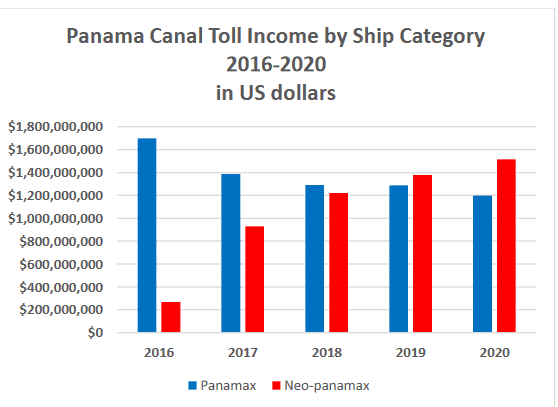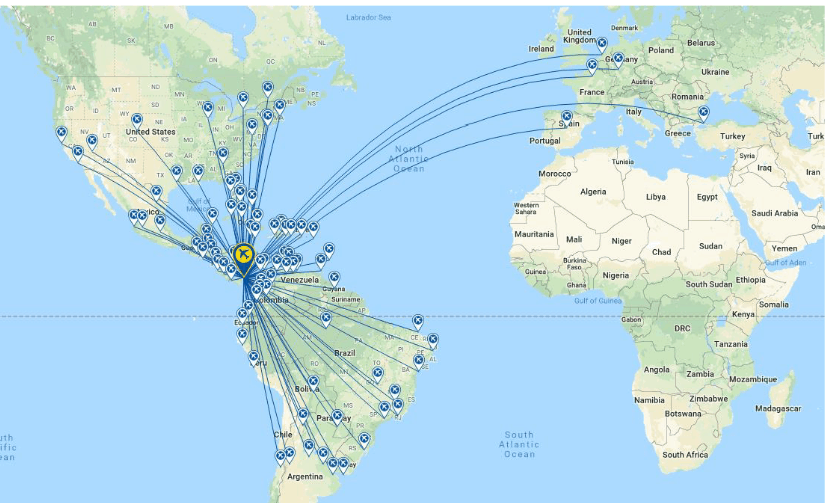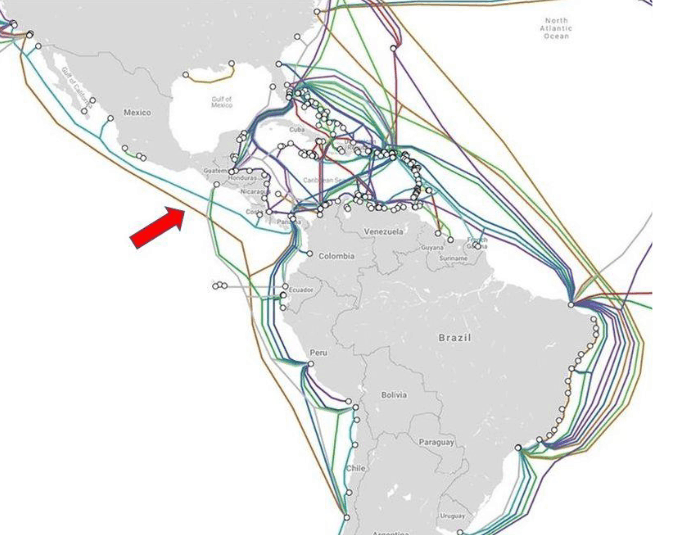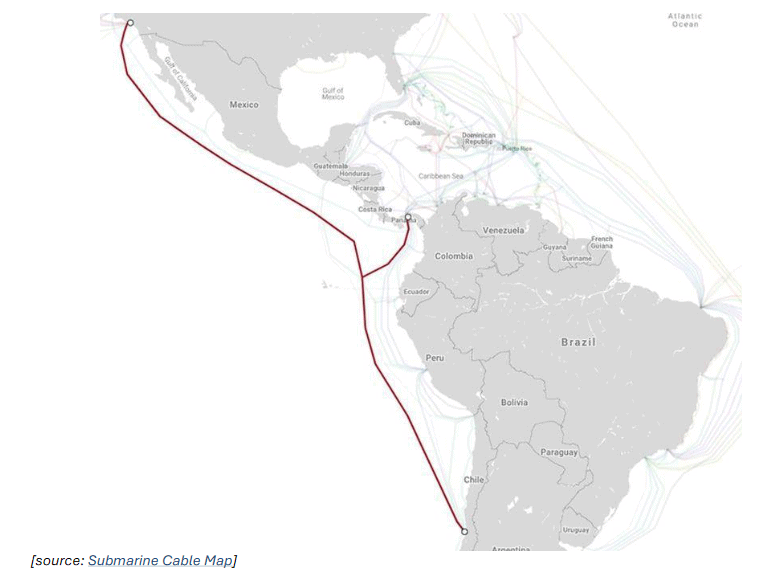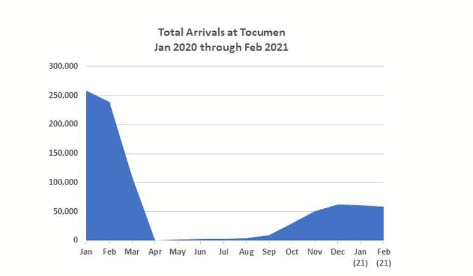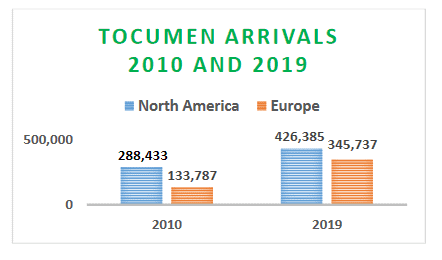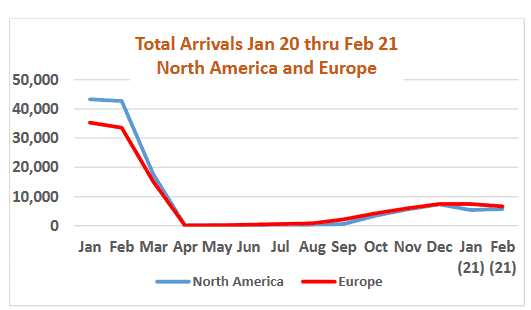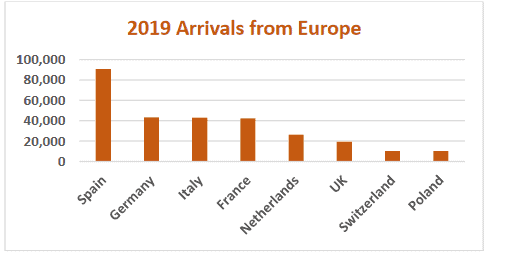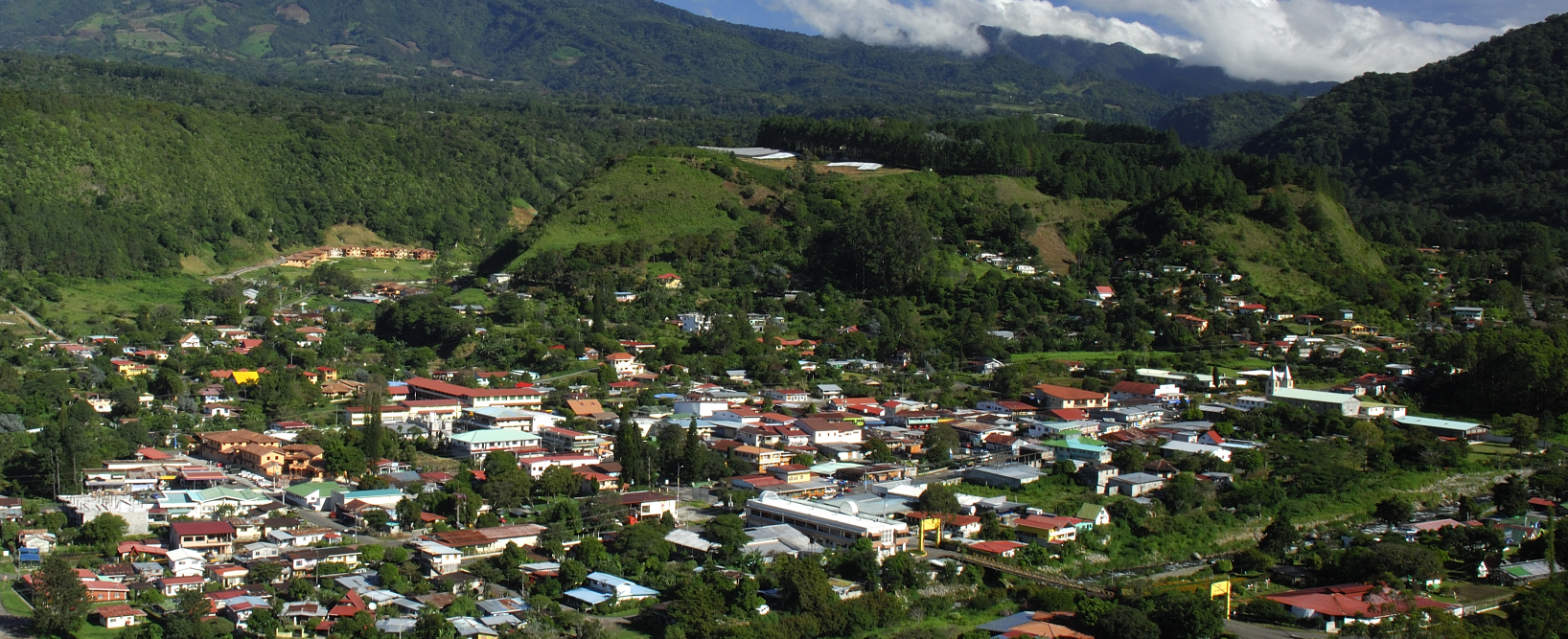This report is reprinted with permission from Bob Adams at RetirementWave.com
You’ll understand why Panama will bounce back from the pandemic faster than most other countries.
So, who is Bob Adams?
When Bob first arrived in Panama 17 years ago he had already completed nearly forty years of professional work in economic development in “developing nations”, today’s “emerging markets”, he found a credible infrastructure for a nation of its size, better than most. Today, Panama’s infrastructure has developed so dramatically that if Bob could suddenly go back and once again arrive at the airport of 2004 and see the nation as he saw it then, he would be blown away. So much has changed in 17 years since Bob arrived in Panama.
Bob says I know that a month from now, things may be very different. No one cannot predict the future with any accuracy. No one has a working crystal ball. The best he can do is give you his view based on five and a half decades of work globally for multiple clients, private and public, and my seventeen years since arrival in Panama.
This has been a tough time, but I want you to know that Bob feels more optimistic about Panama’s future than ever before. This is going to be an amazing decade for Panama
The Zombie Apocalypse
“It was the best of times, it was the worst of times, it was the age of wisdom, it was the age of foolishness,it was the epoch of belief, it was the epoch of incredulity, it was the season of light, it was the season of darkness, it was the spring of hope, it was the winter of despair.”Charles Dickens, British author in his novel,“A Tale of Two Cities”.(1812–1870)
The centuries come and go, but I trust that the words above will outlive all of us, our children, our grand-children, and beyond. I think in everyone’s life there are times when those words say it all so well that inventing new ones seems a waste. This has been (and still is) one of those “worst of times”. May it end sooner than later.A virus does not care about our politics. It does care about our opinions. It does not care about gender, religion, age, race, and all the other ways humans have found to separate themselves from each other. It does not hate us. It simply does not care because it cannot care. A virus is not considered to be alive. It has no brain. It has no nervous system. It cannot even move by itself. It is dead for all practical purposes, but once in a while, it acts as if it was alive and that is when it is harming us. It seems to rest in some vague area between life and death.
Explaining this to someone for the first time is not always easy. I have tried a couple different approaches, but I have never been satisfied with the results. Recently, I came across someone who had the wisdom to put it very simply. A virus is a Zombie! The comparison is not perfect. A zombie is insatiably hungry. A virus feels no hunger at all. A zombie sees a normal human and attacks. A virus cannot “attack”. It waits for someone or something to deliver it to its victim. But those are details. Calling it a “zombie” is good enough.
Is the Zombie Apocalypse over in Panama? No, it is too early to say that. We have made huge strides in recent months. The critical period was the Christmas-Hanukkah period in December when there was a lot of family activity and travel was allowed. People really did a good job of controlling themselves and the evidence was seen in January when there was no major surge. Combined with the arrival of vaccines, January was the beginning of a steady decline in infections, hospitalizations, and deaths which has left us in one of the best positions in all of Latin America and many other nations as well.
However, as I write these words, another surge is threatened, this time from the Costa Rican border. Costa Rica is having a very tough time. Their national income per-capita is substantially lower than ours and their bonds are at “junk” level, not investment level. They will need to make a critical decision as to whether or not to accept a loan from the International Monetary Fund that will provide them low-interest rates and an easier repayment schedule, but Costa Rica will have to dramatically change its government spending levels to meet the basic requirements. As you can imagine, this is not popular among many Costa Ricans and elections are next year.
However, Costa Rica must reignite its economy and get things moving again, so they did something unexpected. From the beginning, their record of control of Covid was one of the best. They were tough on letting people in as we were and others and their health system is one of the best in Latin America. They were justifiably proud of their success with the virus, but their economy was suffering terribly and they have no Canal, no massive Free Trade Zone, and nowhere near as productive infrastructure (land, sea, air, and cyberspace) as we have in Panama.
A decision was made to open their borders to foreign travelers without requiring a test, vaccinations, or anything else, except visitors had to prove they had insurance that would cover all their medical costs (plus local housing, meals, etc.)if they were victims of the virus. I thought that seemed fair, but there was an obvious problem. Now infected people could also arrive who had no idea they were infected, as they had no test, and who had no vaccinations. Nothing prevented someone with Covid arriving who did not know he or she had Covid but was infectious. They pay their own bills, but that isn’t the point. The point is to stop the virus and I could not see how this was going to help.
The results have been devastating. From one of the best records in Latin America, Costa Rica is headed in the opposite direction. As of May 14, you can see the results graphically below and compare the two nations over time.
(Source:Reuters Covid-19 Tracker)(Source: Reuters Covid-19 Tracker)
This is why I cannot tell you that the Zombie Apocalypse is over yet in Panama.This sudden turn-around in infections on the other side of a border that cannot be completely sealed is obviously a potential problem and Panama’s Ministry of Health is at the border crossings, testing and hoping to catch those who are infected. Keep in mind that we bear no ill will toward our cousins on the other side and we understand they are going through a very tough time now with their economy and their health system under great stress while they decide how to finance a recovery. We sincerely wish them success, but we have to protect our people. Until then, travel in Panama’s western provinces may be restricted. As I write, Chiriqui(where Boquete, and Volcan are found)and Veraguas (where Santiago is found) provinces are under curfew from 10 pm to 4 am. Shops must close by 9pm so workers can be home by 10. This is Monday to Saturday. Sunday will be a quarantine day with no outside travel. That was announced 12 May and this policy will be reviewed every 15 days, so don’t worry about it now, just check before coming if that affects your plans.
In the Region
“It is only when the tide goes out that you discover who has been swimming naked.”Warren Buffett –US businessman and investor (1930-present)
Warren Buffett is probably the most frequently quoted investor in the US, possibly anywhere. But of all the times he has been quoted, the quotation above is his most famous. He simply means that when the economy is doing well (the tide is coming in), you don’t see their swimsuits. But when the economy sinks (the tide is going out), that is when you see who has no swimsuit! Not a pretty picture. The tide has gone out globally, but very much so in Latin America and there are a lot of nations we thought were doing well who are standing there, naked. It is hard to find a nation that is not in social or economic or political turmoil, sometimes two of those, sometimes all three. Colombia, as just one example, has had violent demonstrations in opposition to a plan to re-activate the economy with some fees and taxes increased. As I write, at least42people have died, at least 168 listed as “missing”.and hundreds have been arrested. Bolivia, Mexico, Chile, Argentina, Brazil, Peru, Ecuador, and, of course, Venezuela, pretty much everyone is facing serious problems… except Panama.
Meanwhile, here in Panama
Panama is the exception in Latin America. Why? The news was that we had a major drop in national income (GDP) last year and a major rise in unemployment. By all rights, we should have angry demonstrations, mobs hurling insults and obscenities at each other, sometimes violent as elsewhere in Latin America (and beyond).
One is the reason everyone knows. Here are the final figures for 2020 as compared to 2019 when no one was thinking about a pandemic.
As I have pointed out here and at the YouTube channel, there are two “canals”. The first built by the US and opened for business in 1914 and the second built by Panama and opened in 2016. Earlier in this century, I remember those who insisted that expanding the Canal was a waste of money and potentially a disaster.Well, let us take a look at the numbers above again, but this time we can divide them between the two “canals”.
The Panamax refers to the old Canal which is still very much in operation and doing well. The second, the Neo-Panamax refers to the Canal’s expansion, the “new” Canal. You can easily see that the construction of the “second canal” has been absolutely critical to our continued economic growth and helped us to get through the pandemic period to date with a minimum of instability.
I will not take space to cover all the other economic activities from large-scale copper mining to the world’s second-largest free trade zone, to the growing trade in liquified natural gas (LNG), and others. We have income. But in times like these, that is not enough.
Another source of funds is access to loans to help people get through this period to an extent not available to many nations. When that involves loans, we have a good payment record and remain investment-grade. This allowed Panama to borrow substantial amounts early to tie down low-interest rates (including the lowest in the nation’s history) which are meant to maintain us through this year and 2022.
However, the future is not predictable with precision, so suppose we need money but face higher interest rates? This is where the IMF, the International Monetary Fund, comes into focus. Typically, they are the “lender of last resort” to nations in serious trouble and that cannot borrow on the open market because their credit rating is “junk bond” and they have to pay sky-high interest rates. This is what faces Costa Rica as I write.
But the IMF does more than that. Less known is their role in helping nations at risk during a crisis and with good credit records avoid problems. If a nation qualifies, it can be offered “line of credit” that can be used for extra support without going through a long approval process. The money is not taken out unless it is requested. So, if Panama faces the need for more over this two-year period, they can draw down these funds.
The IMF has provided a $2.7billion ($2,700 millón in Spanish) line of credit for Panama, half available this year and half next year. We do not have to use it and, if we do, we can use only what we need and we only pay interest on what we use. If we ever need it, this will make our lives much easier. If we do not need it, we owe nothing.
No one likes debt and Panamanians have a history of avoiding it. But if you cannot pay your bills during a pandemic, help your people get through it, and then have enough left to reactivate your economy, your stability can collapse and, with that, goes any real hope of getting the money in time to make a difference at a price you can afford to pay. I know there are expats who will complain about Panama taking on debt. I am no fan of that either, but I also know that the great majority of us are taxpayers of nations who carry a debt burden far higher than that of Panama when compared to income (GDP).I say to them, remember what they say about living in glass houses.
Maybe so, but just a minute? Do you mean that all is well in Panama?
No way, folks. We have our own problems. They may be smaller than most nations, and we may have more resources to deal with them, but that does not help if you have lost your job or your business has closed its doors. As I have said in past reports, the real impact here has not been on the “macro” level but on the “micro” level where so many of our folks live every day and on which they depend for their income. It is the “hospitality” sector (hotels, restaurants, tourist attractions, etc.) and thousands of small businesses all over the nation that have suffered from the pandemic for the same reasons as in other nations. How many of those jobs and businesses will return? How many will disappear forever? Will new jobs and businesses rise up to fill the gaps, and when will they get here? These are important questions without good answers yet. It is too early, and we are not really sure the pandemic is over in Panama. Do you want a graphic to demonstrate what happened in the past? Here is one that is very familiar to past readers of my Reports from Panama. It is the Monthly Index of Economic Activity and provides the simplest view of what has happened as a result of the pandemic. The pink line shows the monthly totals, and the blue line shows the trend through February.
Pretty dramatic! We fell off a cliff. However, keep in mind that chart runs only through February. Others that show dramatic drops go through March, the first quarter of the year. In 2020, the virus meant nothing to us. As soon as we start comparing months in 2021with quarantine months in 2020, the new stats are going to look a lot more impressive, but it does not deny that the country took a big hit, if not in the big earners like the Canal, copper mine, free trade zone, etc., then in the rest of the economy where so many lost jobs, only roughly half of which have been “reactivated”.
No one starves in Panama and there have been a series of efforts made to help people who have lost their jobs due to the pandemic, as one example, sit down with the bank, cooperative, or other financial institution to provide relief now, but not simply pretend the mortgage is not there.
There is more from monthly food vouchers, electronic and paper, to the delivery of boxes of food to those most in need. Those are put together in a center near where I live and it is an impressive operation. Many semi-trailers (articulated lorries) leave early every morning filled with deliveries to be made around the nation.
There are any number of efforts that help explain why we do not have the violence and hunger as is true in too many other Latin American nations and we can afford them. But that is short-term and will not continue forever. How long this year will be determined as we work throughit.
No, this has not been a walk in the park, as the old saying goes. However, if you take a careful look at nations all around us and beyond in North America, Europe, Asia, you will eventually understand why we can complain with the best of them, but we do not use violence or hate language. In Panama, if you hear Spanish-speakers publicly criticizing Panama, they are rarely Panamanians. As I have said many times, when Panama is faced with a crisis or foreign critics out to hurt us, Panamanians join ranks and face it as one people.
But something very important is still missing!
Everything above is about the past and the present, but that is not Panama’s story. It is the future that counts.I am going to share four maps. Each is current, but each is just a stage in Panama’s continuous development.
The first is our old friend, the Panama Canal. On the next page is a map showing the density of shipping traffic in our area. It is pretty easy to find the Canal there. You can see it in “real-time” form for the Canal specifically and in this “density form” at this site.
Here is some news that you may not have heard. The success of the last expansion is so obvious and the returns are so great that the Canal is in the early stages of beginning another expansion and a new set of locks, even wider than the last ones.
They knew this was possible during the expansion, so the land where such locks would be built was cleared and prepared in advance. Since the heavy equipment was there for the expansion anyhow, it was no problem using it to do the basic land preparation. That will save a great deal of money and time when the Panama Canal Authority chooses to move forward. That is called smart forward planning.
In addition, the Canal Authority has contracted the preparation of an estimated $2 billion ($2,000millón)study to identify and select multiple projects to provide water to the Canal and also for public consumption. They have noted the significant increase in temperatures over the lake portion of the canal and the substantial increase in evaporation. This has been severe enough to already cause the Canal Authority to require that ships have lighter burdens when the water level is low to avoid accidents. This project is designed to eliminate that problem and provide potable water for all of us. More smart forward planning.
The second is another friend, not as old but also fast-growing with more to come–Tocumen International Airport in Panama City. Below is a route map that lacks a few routes but is close enough. We already established more international destinations than any other Latin American airport and that number will grow as we reach out to Asia. For example, we have had the required air services agreement with Singapore for almost a decade, but not the airport we needed to provide what the really large passenger planes require. Now we do. We are already as much an “air hub” as a “sea hub”. We really are the “heart of the Americas”.And we have the infrastructure to back it up.
A new and much larger free trade zone at the terminal is also included. We are as much a hub for freight transport as we are for passenger transport. Finally, we will soon inaugurate a new Metro station that will be available to take people into the city from Tocumen quickly and inexpensively.It all makes its contribution to our economic growth and I have not mentioned our other smaller airports that cover the nation.
The third map coming up next is not one you normally would see. It is a map of all the major undersea fiber optic cables that connectPanamaniansand hundreds of millions of others to every corner of the Americas and beyond. You can see us in the center and so small that it is hard to count the six major cables that cross the Americas through the Panama Canal, but they are part of the “backbone” of the Internet and provide any Internet service you need.I will explain the red arrow in a moment.
Some of these lines are decades-old. Now, about that red arrow. It points to the newest, the Curie line connecting California in the US with Valparaisoin Chile. It is 10,500 kilometers (about 6,500 miles) long and it cost a lot of money as you can imagine. That money was provided by its owner, Google. It is the first new line connecting these two nations to each other in nearly 20 years and will carry a massive amount of traffic from North America to South America and back for many decades to come.
Google is in business. They see a growing e-commerce sector developing in the Americas and they intend to profit from that by providing the services required. However, this map is too crowded. It really doesn’t show you what Google did clearly. The next map will do that.
Now you know where Google thinks the center of this growing e-commerce sector will be located.One thing I can guarantee. There were many nations what would have been so happy to have been chosen, but the only one that provide the stability, infrastructure, and business policies necessary for something so critical and expensive is Panama.
If I had to choose one simple, elegant way to suggest the “behind the scenes” reality of Panama’s situation, this map is it. When you stop to think about it, all three of these system maps: sea, air, and cyberspace backed up by the world’s second-largest free trade zone and multiple smaller zones really fit together as one system for trade and commerce. In Panama, we call ourselves a “logistics platform” and now you know why.
And so much more
There are so many other efforts underway. The final portion of Metro Line 2 is a spur from Tocumen airport to downtown Panama City and it should be done soon. Work on Metro Line 3 work has begun and a South Korean firm has been awarded a contract to prepare plans for Metro Line 5 (don’t worry, we will get to 4 later)
Soon we should have the formal opening of Terminal 2 at Tocumen airport. It is already being used, but there’s some work to be finished following the pause for the pandemic. Likewise, work is underway again on the new convention center that will allow us to compete with major venues in Latin America and North America and is long overdue.
Nearby, a new spur of the Cinta Costera(the beltway that runs along the city’s bayshore) will connect the convention center to the center-city.
Finally, Panama is building a new cruise ship port close by, the first on its Pacific coast, that will be able to handle two large cruise ships at a time. Panama has a series of twenty modest but critical projects underway in the countryside, bridges being built for example that have long been promised. There are some bigger projects beginning in the provinces as well, along with plenty of other small projects that are important to local communities. Today, we are focused on employment, but not just “jobs for the sake of jobs”, but real work on continuing expansion of our infrastructure that puts us in a class by itself regionally.
One Sad Note
Every day, there are people who arrive in Panama seeking one kind of “safe haven” or another from problems in their home nations. It amazes me how some of them spend very little time before they begin criticizing Panama. They seem to have created a habit they cannot break. It is sad to see, sad to hear, just plain sad.
Panamanians are like all the rest of us in so many ways but few, if any, leave looking for “safe haven” from Panama. What about real estate, Bob? People are coming, no doubt about it, and looking to buy or rent. Their numbers are still smaller than we like and need, but at least they are coming! They are looking everywhere and most are going through the normal initial experience of their first visit. There is something very comforting in all that. I have met several of you and have more on the way, so I get to hear and see it all unfold, one human story at a time.
We have no statistics specifically related to people coming who are thinking of relocation or actually doing it.The best I can do is keep an eye on the arrivals at Tocumen International. I look for something to be different, to stand out, to catch my eye. I will share a couple things I have noticed. Since the detailed statistics only run through February, the numbers are small for now. Reports are that they have grown substantially since then and I am not at all surprised, but those are not available by nation at the moment. Nonetheless, we can take a look at what there is available.We begin with total arrivals.
One thing that caught my eye was the rise in European arrivals. Traditionally, North Americans(Americans and Canadians)have far outnumbered Europeans, but increased flights and advertising led to changes over time. In the last decade up until the last pre-pandemic year, we see this.
This has been the trend for several years. What interested me most was when I compared arrivals from the two continents over the last 14 months. Pre-pandemic, it was what might be expected given 2019 performance, but it did not end that way.
This was unexpected. Given how expensive and time-consuming it is to travel from Europe, given that many flights had been canceled,and given the fact that many Europeans had to pass through two airports and security procedures on their way to Panama (Italy has no direct flights, for example), the fact that Europeans actually outnumbered North Americans definitely caught my eye.So where did they come from? Actually, from every European nation, but here are those that supplied at least 10,000 arrivals in 2019, pre-pandemic.
Poland is the “new kid on the block”and is welcome!
Of course, not all of these people come to consider relocation to Panama. The same is true of North Americans. But given the expense and inconvenience these days, I think relocationis on the mind of quite a few. As anyone living in Panama City should know by now, you can hear just about any European accent in a supermarket or in the elevator at your condo!And many of them are younger, certainly not retirees.
Anecdotal information that is passed along, but cannot be verified, is that several visitors from Europe have purchased multiple properties and received steep discounts. When you Arrivals from Europe arrive with a million or two of cash to spend and a developer/promoter is eager to turn over as many residences as possible as quickly as possible, the best deals can be made.
And here is one more interesting fact. Despite the fact that the number of arrivals from Europe was far higher in the first few pre-Covid months of 2019, one European nation sent us more people in the last months during the pandemic and into this year. Every other European nation’s totals fell sharply, usually around 70% or more. Who rose? The Ukraine.
Perhaps our reputation as a good safe haven is more global than we thought. Panama is a global crossroads in more ways than one. You are all welcome. Just bring goodwill, tolerance and respect for others with different backgrounds, remember you are a guest, and join us to build a future for ourselves and our neighbors that we can all be proud of.
It is a simple story and a good one
Panama has changed almost beyond belief in the 17 years since I first arrived. People who had last been in Panama in the 1990s were shocked by the changes they saw which were already there when I came. It was impressive. Three or four years later, I had the opportunity to read a confidential report prepared for a very large global firm(the kind where you can say it is truly a “household name”)by a team of in-house professionals whose job was to determine where the company would put new offices or open operations. Of course, the government provided them with any statistics they requested and any other assistance. When they felt they needed more detail, they went out and got it. I was astonished! I had never read such a thorough report with appendix after appendix attached with very little “white space” and no fancy graphics. It not only did this for Panama City, but also the “competition” –Bogota in Colombia, Lima in Peru, San Jose in Costa Rica, Santiago in Chile, and Sao Paulo in Brazil. There may be one or two others I have forgotten They created a “matrix” showing each city and its nation and how it compared to their requirements and what was provided by the other cities. The whole book was more than 200 pages, possibly 300. It covered schools shopping malls, sports facilities, and far more than pure business services. Why? Because they would be moving families to their new Latin American hub, not just employees. It was given to me in confidence and I have never broken that confidence and see no reason to do so now, but I will tell you this. Over a decade ago when Panama City offered a great deal less than it does today, it “won” the competition. Today, they have been joined by 175 global firms who meet the requirements of a major business and receive special support and benefits in return. If you want, you can skim through this advertisement at Bloomberg and hear a few others on the topic today, plus they have a really cool map that combines all three of mine.
And so here we are today. Surrounded by nations torn by internal strife, riots, confrontations with the police or military or both, people being shot, some dying, billions of dollars of damage done to facilities, both private and public, and here Panama is today, as “boring” as ever and for all the right reasons.
It has been a long haul for us and we look forward to putting it behind us. I truly hate face masks as much as anyone, but in Panama, we can complain all we want, but when we walk out the door and confront reality, we are one society. And when we see what happens in nations like Costa Rica that are in desperate need of money and open up prematurely, it reminds us that we need to be sure we do not make the same mistake.
But please do not waste your time sending us condolences! If you have read what comes before, you know we are doing what we have been doing for two decades –building a better nation for Panamanians, and for everyone else too. Maybe it is not the right place for you and I have absolutely no problem with that, quite the contrary. Your judgment is the right judgment and do not let Bob Adams or anyone else tell you otherwise. But if you are still looking, come back in five years. You may be surprised.
Last but not least
And now past members know what comes next. I will end with the same words I have used in every report I have sent out since the first one nearly two decades ago. A little humility is always good for the soul, so join me in repeating…
“No one knows the future. Free markets go up and free markets go down. The future is not a simple extrapolation of the present. Anything can happen. Everyone has an opinion and those words above are just opinions.”



